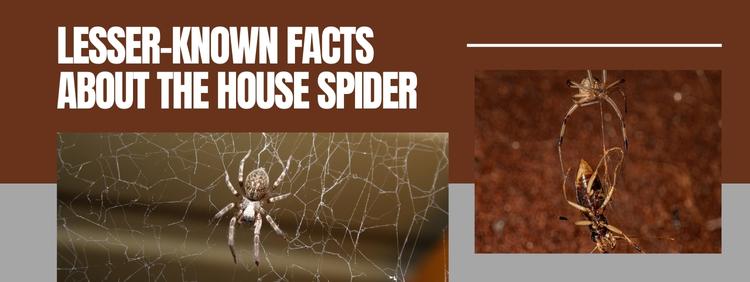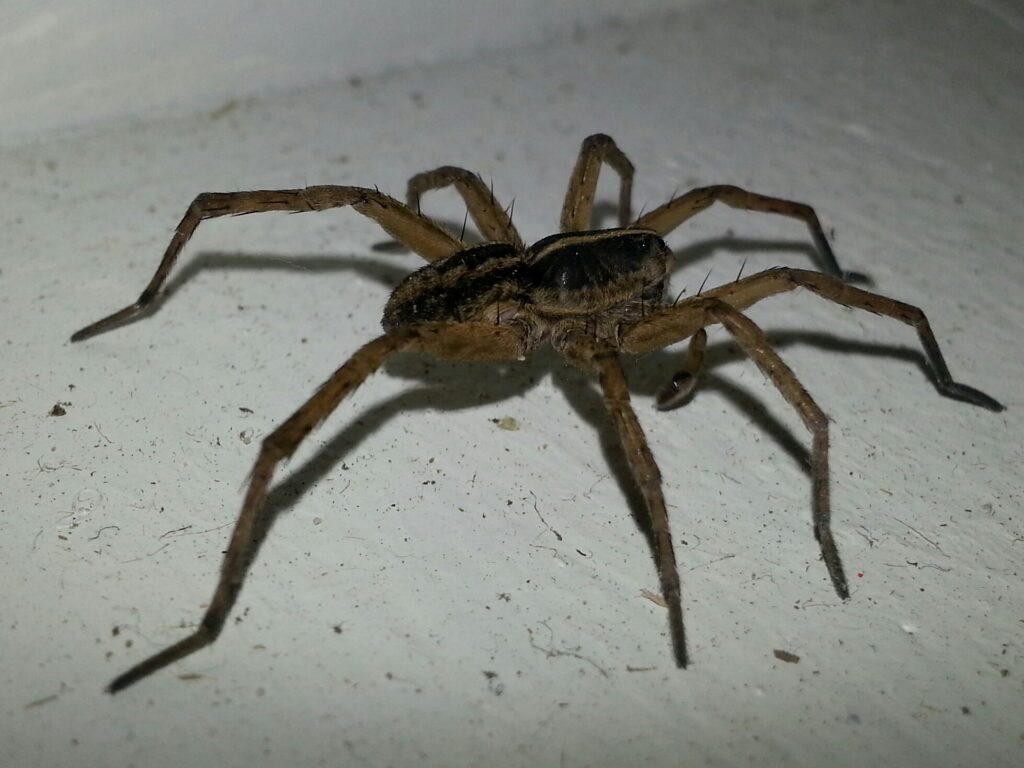 When it comes to pest control in Toronto, most homeowners have their eyes on the usual suspects - rats, cockroaches, or ants.
However, one less-obtrusive yet prevalent household pest often slips under the radar - the common house spider. So, let's explore some of the lesser-known facts about this eight-legged cohabitant and learn how Truly Nolen Pest Control helps homeowners in their battle against creepy crawlers.
Knowledge is power. The more you know about these common house spiders, the better you can protect your home from unwanted invasions.
When it comes to pest control in Toronto, most homeowners have their eyes on the usual suspects - rats, cockroaches, or ants.
However, one less-obtrusive yet prevalent household pest often slips under the radar - the common house spider. So, let's explore some of the lesser-known facts about this eight-legged cohabitant and learn how Truly Nolen Pest Control helps homeowners in their battle against creepy crawlers.
Knowledge is power. The more you know about these common house spiders, the better you can protect your home from unwanted invasions.
- The house spider is not innate to North America but was introduced from Europe.
- Unlike some species, they do not pose a significant threat to humans.
- These spiders are a natural form of pest control, feeding on other insects that could potentially infest your home.
What Are Some Lesser-Known Facts About Common House Spiders?
House spiders, despite being often feared and detested, are fascinating creatures that play crucial roles in our ecosystem. Let's shed some light on some often overlooked facts about these eight-legged tenants that may surprise you and perhaps even change your perspective towards them.- Not all spiders are pests: While it's true that some can be a nuisance, most are harmless and serve a beneficial role in nature by consuming other insects. A single spider could eat as many as 2,000 insects in a year! Yet, their presence indoors can sometimes create discomfort, mainly due to their eerie appearance. However, remember that their main aim is not to frighten you but to hunt for other smaller pests in your home. This makes your common house spider a helpful ally, playing a part in maintaining the natural balance in your home's ecosystem.
- They are not aggressive: Believe it or not, spiders tend to avoid human interaction as much as possible. Most bites occur when they feel threatened or accidentally disturbed. So, even if these eight-legged creatures may inspire fear, they rarely pose a direct threat to us. However, their cobwebs and isolated presence in hidden corners can make our homes feel less clean and cozy. It's essential to address a pest problem before it becomes a full-blown infestation.
- Recycle silk: A unique and often ignored fact about these small creatures is that they recycle. They consume their old silk before spinning a new web, embodying an incredible example of resourcefulness in nature. Moreover, this intriguing habit is not only environmentally friendly, but it also provides essential nutrients to these agile predators. By consuming their old webs, spiders reabsorb the proteins used in silk production, essentially ‘recycling’ beneficial compounds and energy within their bodies.
- Have blue blood: Instead of red hemoglobin like humans, spiders use a copper-based molecule called hemocyanin to transport oxygen, giving their blood a blue hue. Intriguingly, this blue blood is the key to their survival in numerous environmental conditions. Hemocyanin, functioning significantly differently than our own hemoglobin, carries oxygen efficiently even in low-temperature conditions. This is why you'll typically find them thriving in chillier environments, such as dark basements and garden sheds.
What Are The Common Signs Of A Pest Infestation In A Home?
While spiders are generally harmless and even beneficial to the ecosystem, an overpopulation of these insects in our homes can cause distress. Understanding what signs to look for can help us diagnose the problem early and take the correct actions to stop an infestation from becoming out of control.
- Visible: Seeing numerous spiders around your home on a regular basis could be an indication of an infestation. Remember, for every one you see, there will likely be many more hiding out of sight. Their presence does not always denote a risk; these insects can act as natural pest control by consuming other insects. However, a large number of them could disturb the balance of your home, leading to an uncomfortable living environment. Furthermore, certain species are venomous and can pose severe health risks to you and your family. Professional pest control services may be required for efficient and safe removal in such cases.
- Webs: Not all spiders spin webs, but many do. If you keep finding webs in corners of your rooms, along windows, or in plants, it could suggest a higher-than-normal population. These arachnids use their webs as both a home and a trap for their prey. While spiders can reduce the number of other pests in your home, a significant rise in their numbers might mean it's time to consider methods of removal.
- Egg sacs: Depending on the species, an egg sac can contain hundreds of eggs. Egg sacs are usually round or disc-shaped and may be hidden in webs or hung from ceilings. These sacs are often camouflaged or cloaked in web material to protect future offspring from predators. Timing is crucial for spiderlings; they typically hatch during warmer months when food, typically other insects, is abundant. This is one major reason why the presence of spiders might increase in your home as the temperatures rise.
What Are Some Effective Removal Tips That Homeowners Can Implement?
As a homeowner, the common house spider could share your comfortable living space. Don't panic, though, as there are various strategies to follow for effective pest removal. Knowledge is the foundation of effective pest control. Here are some tips that can help keep them under control.Coexist Peacefully or Show Them the Exit?
Firstly, it's important to remember that spiders aren't entirely bad guests. They are nature's pest controllers and can actually help reduce the population of other bugs in your home. However, if their presence makes you uncomfortable, it's time to learn how to get rid of them in a non-invasive way.- One of the simplest methods is keeping your place neat and tidy. Regular sweeping, vacuuming, and dusting will deter them by removing their webs and potential food sources. Another convenient approach is using natural deterrents like essential oils. Spiders dislike strong odours such as peppermint, lavender, citrus, and eucalyptus. Incorporating these into your cleaning routine can act as a natural repellent.
- Inspect your home for cracks and gaps in walls and seal them. These can act as entry points so closing up these areas can help keep them out. Ensure cleanliness at home, specifically in areas like basements, closets, and other hidden corners. Spiders tend to accumulate in dark and quiet environments, so frequent cleaning is crucial to discourage habitation.

